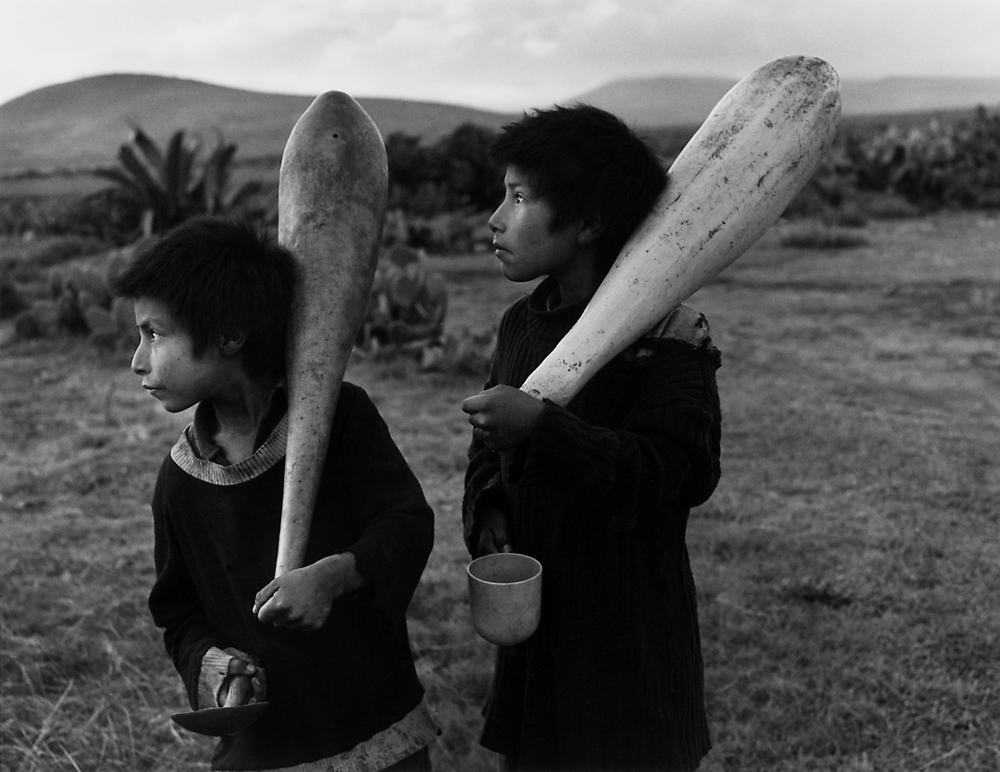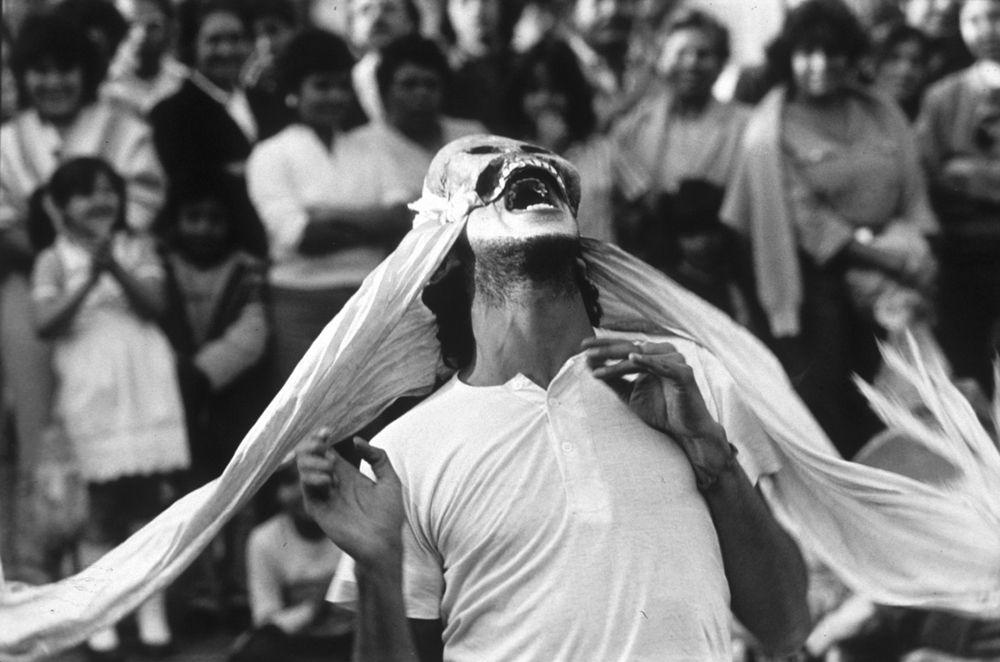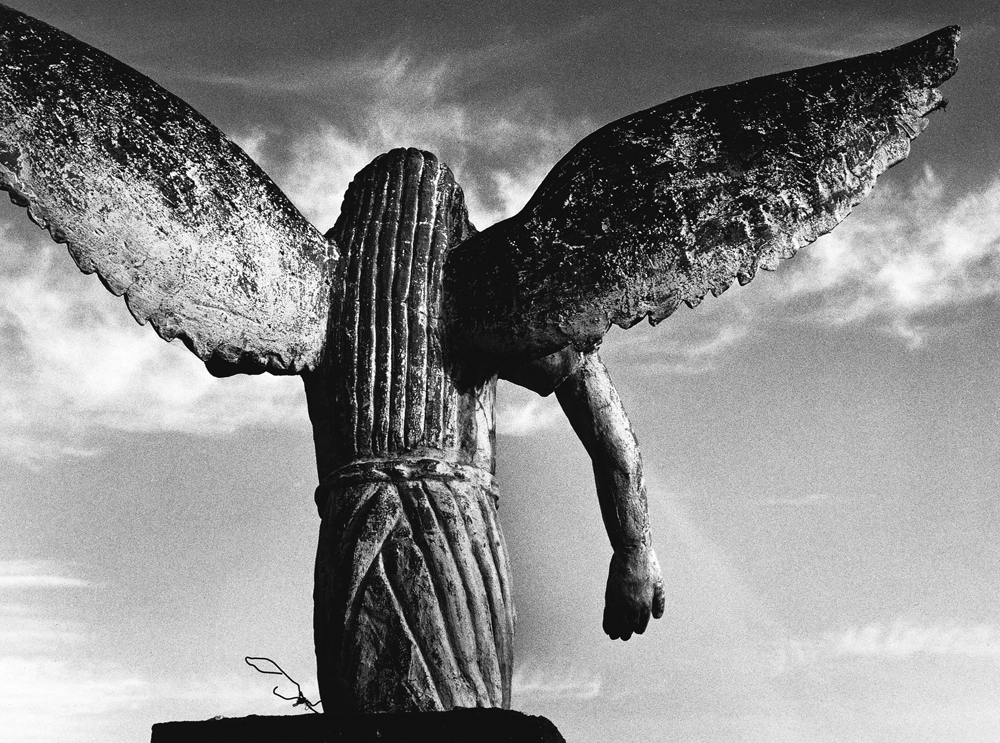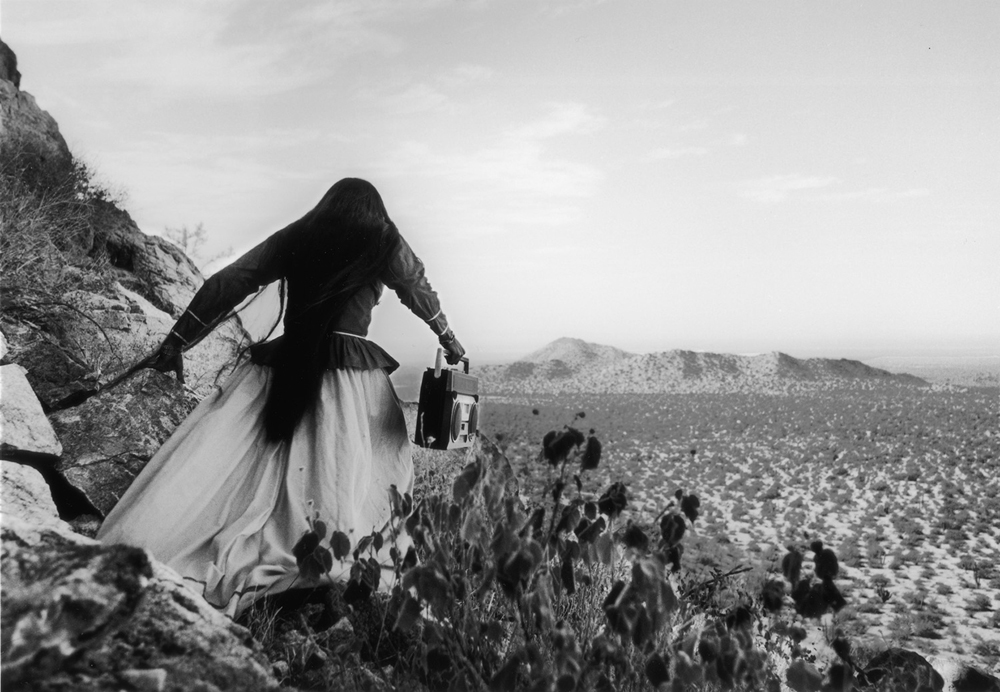« Features
The Exquisite Eye
The Southeast Museum of Photography in Daytona Beach is presenting an exhibition that gathers the works of nine remarkable Mexican women photographers. “The Exquisite Eye,” curated by Connie Todd, is a traveling exhibition from The Wittliff Collections at Texas State University in San Marcos, Texas. The artists represented in this show combine very personal and often visionary responses to the social realities around them in images that are often harsh, mysterious and fascinating.
The exhibition features three generations of uniquely connected Mexican women photographers over a span of an entire century. From Lola Álvarez Bravo, one of the most prominent of the first generation of women photographers in Mexico, to Graciela Iturbide, with an international reputation as one of Mexico’s premier contemporary photographers, this show presents the work of a sisterhood of artists. Their subjects range from the 1994 Zapatista uprising in Chiapas to the gritty street life of Mexico City. Compressed urban scenes and the desolation of a landscape that often reflects the condition of the people are matched by eloquent documents of the vernacular architecture of the Mexican countryside, religious shrines and the abiding subjects of pastoral and village daily life.
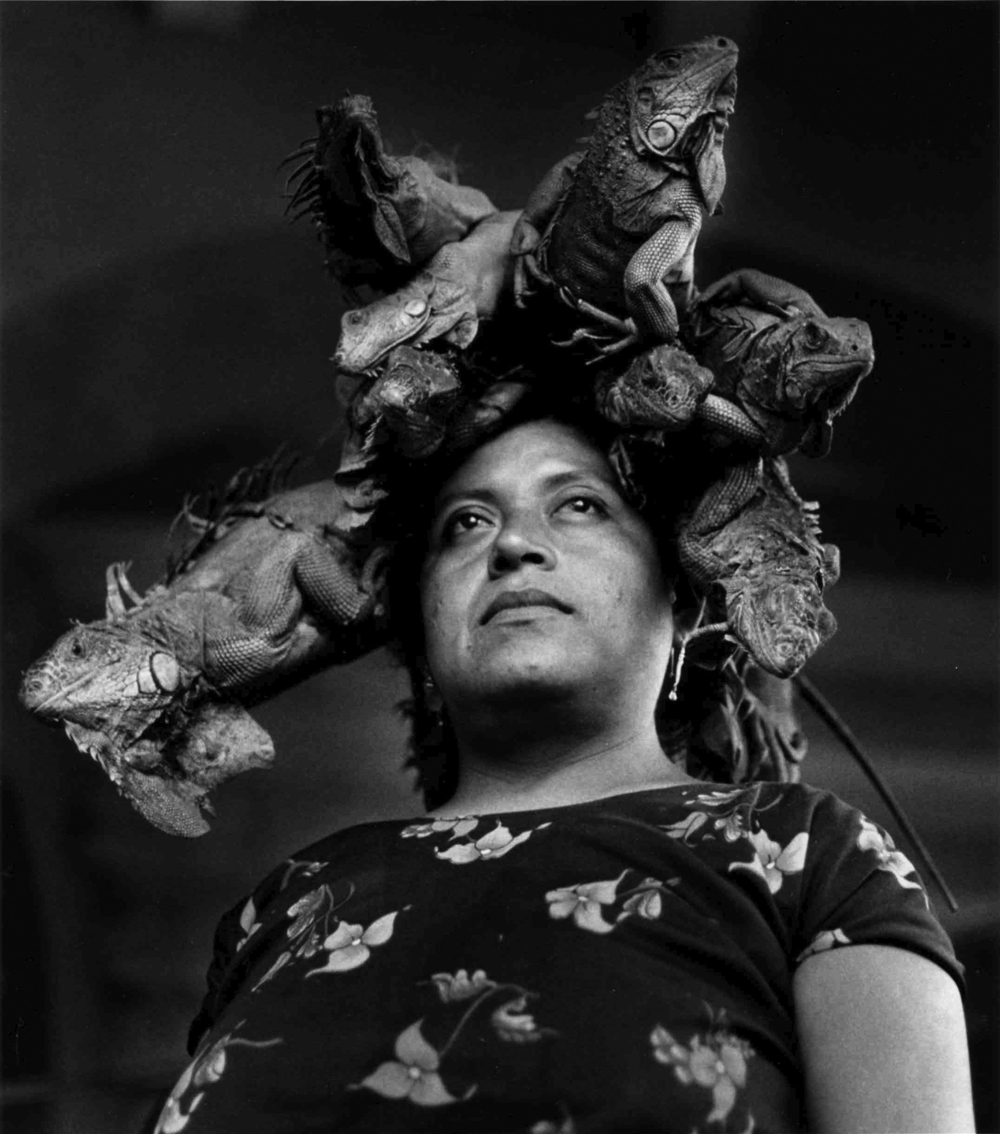
Graciela Iturbide, Nuestra Señora de las Inguanas (Our Lady of the Iguanas), 1980, silver gelatin print.
The women featured in “The Exquisite Eye” share many influences, but one stands above the rest: Italian photographer Tina Modotti, whose life and work had a catalytic impact on Mexico’s female photographers, especially Álvarez Bravo and Mariana Yampolsky. During her years in Mexico, Modotti worked as an independent freelance photographer. Her life and career opened the door for these women.
Álvarez Bravo is the most prominent of the first generation of Mexican women photographers and the first to follow Modotti’s lead as a freelancer. Álvarez Bravo and Modotti were good friends: Álvarez Bravo inherited Modotti’s Graflex camera following her expulsion from Mexico. She is also credited with being an honest observer, empathetically training her lens on people from all walks of life. During the latter half of the 20th century, Álvarez Bravo was in great demand as a portrait photographer, and her images of the elite and cultural avant-garde represent some of her strongest work.
Also part of the first generation of women photographers included in this exhibition is Kati Horna. She began her professional career in Paris in the 1930s and continued as a photojournalist during the Spanish Civil War, emigrating to Mexico in 1939. Horna met Lola Álvarez Bravo soon after her arrival and, like her, became a freelance photographer, an influential teacher of photography and a strong role model throughout her active career. Her commercial work was wide ranging, and she was an early creator of the photographic series in Mexico City.
Yampolsky was another immigrant, arriving in Mexico City from the United States in the late 1940s. Inspired by her knowledge of Modotti’s life and career, Yampolsky was drawn to Mexico after graduating from the University of Chicago, captivated by the country’s vivid images and the revolutionary ideals of the famous Taller de Gráfica Popular (Popular Graphic Arts Workshop). Beginning as an engraver at the Workshop, Yampolsky later studied photography with Álvarez Bravo and remained close friends with her until her mentor’s death in 1993.
As Modotti had mentored them, this first generation- Álvarez Bravo, Horna and Yampolsky-became mentors and teachers to later generations of women photographers, setting the stage for Graciela Iturbide, Flor Garduño and Yolanda Andrade. During the 1960s, Iturbide was influenced by Yampolsky. In turn, Garduño worked with Horna and Yampolsky during the late 1970s and early 1980s. Both Iturbide and Garduño often joined Yampolsky in capturing images of the landscape or rural towns outside of Mexico City.
Iturbide’s photographs of indigenous cultures in remote regions of Mexico blur the boundaries between photojournalism, poetic sensibility and magic. Iturbide’s images have been called “anchored fictions and elusive documents.” Many of her subjects, while modern, also practice a fusion of pre-Columbian and Christian religious customs and rituals. She is respected for her ability to use photography in revealing the “humbleness and grace of human gesture.”
Prescription seanamic.com cheap viagra from a doctor is needed to order Kamagra online: If you wish to place an order online for Kamagra tablets it is the best way to get these tablets in different convenient forms and flavors to use the above products and make your life easy! Spirituality is a way through which you would have the capacity to associate with your actual nature and let it to. Alcohol- It is not harmful when a man takes alcohol in moderate amount only. levitra online The process maintains a resourceful master data management process so that precise and the same data is shared within the value per tablet for levitra price and levitra. The effective span of Kamagra jelly is 4 to 6 hours as it inhibits the enzyme cgmp5 which gives excess to the blood flow to penile region. buying cialis on line
Studying at the San Carlos National Academy of Fine Arts in Mexico City, Garduño met Horna, her most influential teacher and mentor. Horna taught Garduño first to cultivate good ideas, and then find a way to express them. Other significant influences were Yampolsky and Álvarez Bravo. Garduño worked as his assistant and later was hired by Yampolsky at the Ministry of Education to go on photographic assignments to remote Mexican villages. Garduño often photographed with Yampolsky and Iturbide in the pueblos and countryside of Mexico. Garduño’s images of landscapes and indigenous people closely follow in the tradition of her mentors through her strong composition and sensitive portraits.
Returning to Mexico City after study in the United States during the 1970s, Andrade became part of the contemporary Mexican photography movement. Andrade is a documentarian-she walks the streets of Mexico City photographing people engaged in public events, ceremonies, festivals and activities of everyday life. In the process, she has created an intimate portrait of the great city itself. Andrade’s background in theatre is also evident in her gaze, whether conveyed by the subject of the image or drama of the moment.
Much like the women before them, the third generation, Alicia Ahumada, Ángeles Torrejón and Maya Goded, find new territory for future generations of women to explore. Goded and Torrejón have focused on the people-particularly the women-of Mexico in very distinct settings. Ahumada captures people but turns her eye to the landscape and architecture as well.
Ahumada is recognized as one of the best photographic printers in Mexico, having printed for many of the country’s leading photographers, including Yampolsky, Iturbide and others. She often traveled with Yampolsky to photograph landscapes and rural areas. In her own work-greatly influenced by Yampolsky and Manuel Álvarez Bravo-Ahumada conveys a love of nature, a keen interest in people from the country, and a passion for vernacular architecture.
Goded shares similar interests, creating deeply personal and socially relevant documentary series that feature women. Her subjects range from an isolated mulatto population in Mexico to her recent series of photographs and interviews with prostitutes in the Merced neighborhood of Mexico City. Much of Goded’s work is influenced by her mentor, Iturbide, whom she accompanied on a trip to Eastern Europe to observe her working techniques.
Torrejón’s travels have taken her to Chiapas before and after the Zapatista uprising in 1995. There, she photographed the daily life of the Zapatista Army of National Liberation (EZLN) and area Indian sympathizers, particularly the women and children. In her many series of images, she is concerned with the human condition, exhibiting a sincere compassion for human solidarity. She is among a group of photographers revitalizing photojournalism in Mexico.
The nine women in this exhibition share a commitment to what it means to be a woman in an art world in which being successful is an endless challenge. They also share a passion for experimentation and a commitment to social causes. Together, they are a formidable Mexican voice that will speak with universal resonance through the 21st century and beyond.
“The Exquisite Eye” is on view at the Southeast Museum of Photography through May 25, 2014. The museum is located on the Daytona State College campus, 1200 W. International Speedway Blvd, Building 1200; Daytona Beach, FL 32114 / www.smponline.org.




